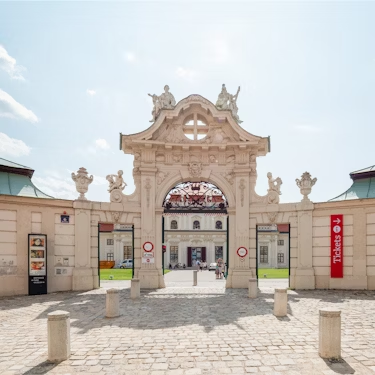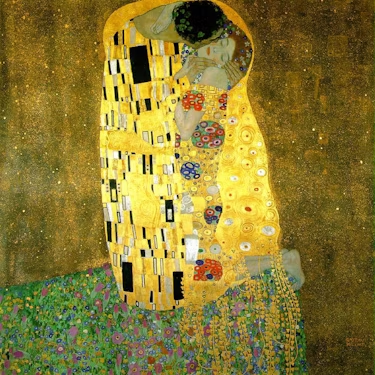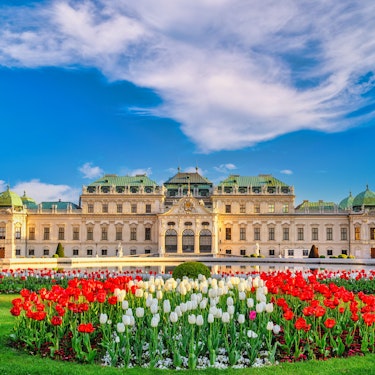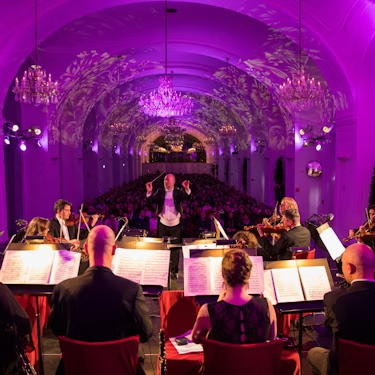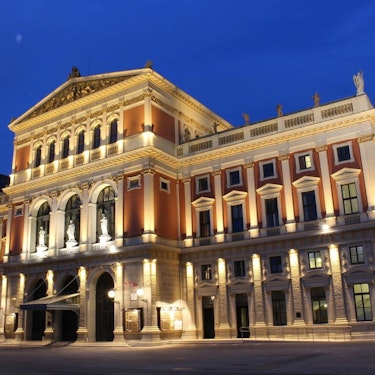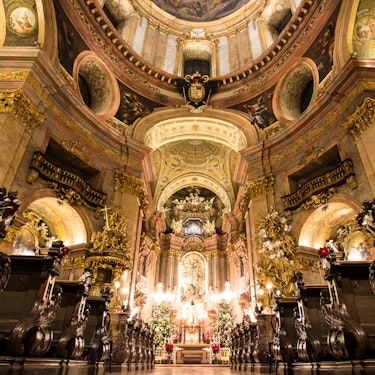More about: Belvedere Palace in Vienna Tickets and Tours
The Belvedere Palace houses one of the most visited museums in the country. The building, divided between the Upper and Lower Belvedere, was built in the 18th century to be the summer residence of Prince Eugene of Savoy. Nowadays you will find a fantastic collection of art inside that you should not miss. Here I tell you everything you need to know to get your tickets.

Vienna Upper Belvedere and Gustav Klimt Permanent Collection Tickets
Skip-the-line tickets to enjoy the best works of art in the museum
Perfect if you want to enjoy some essential works of world art history without having to wait in line to get in. Take some time to stroll through the gardens as well.
On many occasions, the enormous attractions of the streets of Vienna mean that you lose sight of what its museums house. A good example is the Belvedere Palace, a fabulous building built in the 18th century that today houses works by such renowned artists as Gustav Kilmt and Egon Schiele.
Con Vienna Upper Belvedere and Gustav Klimt Permanent Collection Tickets you will be able to visit the rooms located in the Upper Belvedere, including the most famous of the entire collection: Klimt's Kiss. You will also be able to tour the beautiful gardens surrounding the building. All this without having to wait in the long queues that usually form to enter the museum.
Recommended if... you want to enjoy some of the best works of art in the country in a fantastic setting and without having to queue.
How to get your Belvedere Palace tickets at the box office
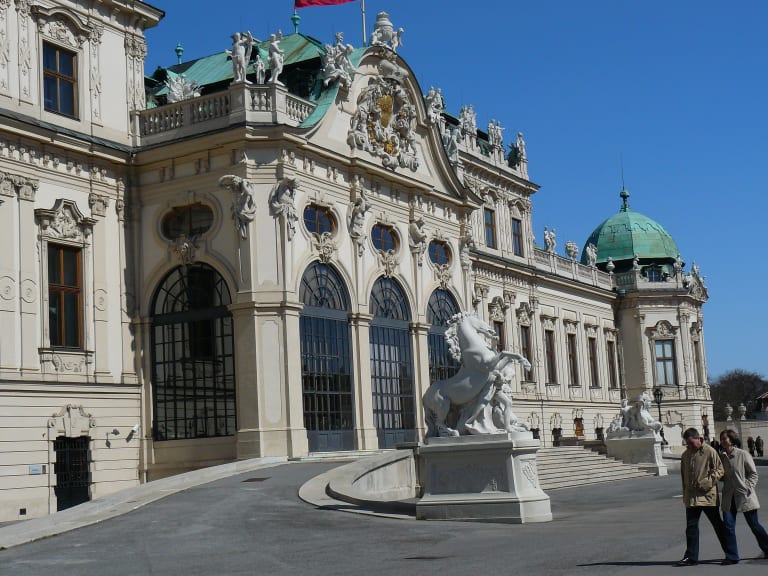
In case you haven't bought your Vienna Upper Belvedere and Gustav Klimt Permanent Collection Tickets or do not have the Vienna Pass, with all the advantages that this entails, you can buy them at the ticket office of the palace itself. To do so, you have to use the access to the gardens on Rennweg and approach the Lower Belvedere building.
Once you pass the gate leading to the front courtyard of the palace, go around the green area in front of the building and turn right. This is where the door to the visitor centre is located. In this area you will find the ticket offices (where you will almost certainly have to queue), toilets and lockers where you should leave your rucksacks if you are carrying them, as it is forbidden to bring them inside.
Tickets to the Belvedere Palace can be purchased in various formats depending on the areas you want to visit. The areas that can be visited are as follows:
- Upper Belvedere only: where you will find paintings by Klimt and other painters.
- Only Lower Belvedere: includes several rooms with sculptures, the orangerie (the former orangery ), the stables and the private garden.
- Solo Belvedere 21: contains works from the post-war period.
- Belvedere Ticket: combines the visit to the Upper and Lower Belvedere.
- Full ticket: to visit all areas of the palace complex.
For a few years now, the museum has had the same entry system in place as at Schoenbrunn Palace. So, when you buy your ticket (no matter which way you buy it) you have to choose a time slot in which you want to enter. Once inside, however, time is not limited in any way.
Since buying tickets at the ticket office does not allow you to skip the queues, the museum itself advises you to try not to book the time slot between 11:00 and 14:00, as this is when it receives the most visitors.
How much do tickets to Belvedere Palace cost?

The price of tickets purchased at the ticket office or on the monument's website varies depending on what you want to visit:
- Upper Belvedere: although prices may change, the general admission ticket will cost you around €15,90 if you buy it online (€18 at the ticket office). Over 65s and students under 26 will only have to pay around €13.40 (€15.50 at the ticket office). Admission is free for children under the age of 19. Vienna Card holders also receive a discount.
- Lower Belvedere: the normal ticket costs around €13.90 online (€16 at the ticket office), while seniors over 65 and students up to the age of 26 will have to pay around €11 (€12.50 at the ticket office). The conditions for children under 19 are the same as above.
- Belvedere 21: if you only want to visit Belvedere 21, you will have to pay €8.90 (€10.50 at the ticket office). Seniors over 65 and students up to the age of 26 pay €6.90 (€8.50 at the ticket office), while children under 19 are free.
- Belvedere Ticket: To enter the Upper and Lower Belvedere you have to buy a ticket which costs around 22,90 € (26 € at the box office) or 19,90 € (23,50 at the box office) if you are over 65 or a student up to 26 years old. There is no charge for children under 19.
- Full ticket: costs around €24.90 (€29 at the box office). Over 65s and students under 26 can get in for €21.90 (€25 at the box office). As with all other tickets, children under the age of 19 are exempt from paying.
On the other hand, entrance to the Belvedere Palace gardens alone is completely free, with no entrance fee.
Belvedere Palace opening hours

The gardens can be visited from 6:30 in the morning until 21:00 in the evening. The opening hours for the buildings are as follows:
- Upper Belvedere: Monday to Sunday between 10:00 and 18:00, although in August the closing time is usually extended to 19:00 and on Fridays it does not close until 21:00.
- Lower Belvedere: from 11:00 to 18:00 from Tuesday to Sunday, but on Thursdays it does not close until 21:00. The museum is open on some public holidays on Mondays.
- Belvedere 21: every day of the week between 10:00 and 18:00.
Is there an audio guide and how much does it cost?

If you would like to take the tour with information about everything you are seeing, the Belvedere Palace offers audio guides for all its visitors.
In the Upper Belvedere you will find it at the entrance and you can choose from several languages, including Spanish.
If you want an audio guide for the Lower Belvedere, you will have to pick one up at the ticket office, but they are only available in German or English.
The price of an audio guide ranges from €5 for the Upper Belvedere to €4 for the Lower Belvedere.
How much time do you need to visit the Belvedere Palace?

Although it depends a lot on the parts you wanted to visit and, of course, on your interests, the visit to the Belvedere Palace usually takes between 2 and 3 hours. My advice is to focus on the pictorial collections of the Upper Belvedere and the gardens, as in Vienna you will find palaces with a more interesting baroque interior architecture than the Lower Belvedere.
What not to miss at the Belvedere Palace
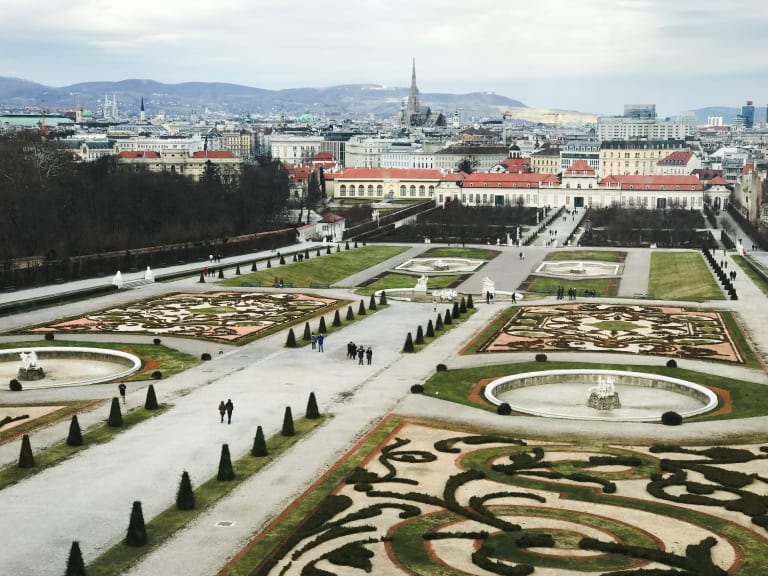
The Belvedere Palace is one of the essential visits you must make if you travel to the capital of Austria. Not only for its Baroque architecture, but also for housing one of the most interesting collections of paintings in the country.
This palace was built in the 15th century by order of Prince Eugene of Savoy. Its first function was to serve as a summer residence and a place for celebrations for this nobleman. When the prince died, the building passed into the hands of Empress Maria Theresa.
Today it houses a number of collections of Austrian art from medieval times to the present day. The complex has two different palaces, the Upper Belvedere and the Lower Belvedere, linked by a huge French-style garden.
- Upper Belvedere: This palace is the main building of the complex, which can be seen by its elaborate façade. Apart from its architecture, the palace is one of the most visited monuments in the country because it houses the so-called Austrian Gallery, a collection of paintings by painters from the 19th and 20th centuries. Amongst the exhibits, some of Gustav Klimt's paintings stand out, especially "The Kiss" and "Judith". The Terrena Hall ( where some interesting classical music concerts are held), the chapel and the Marble Hall are also worth a visit.
- Lower Belvedere: smaller than the previous one and with a rather simpler façade, the most interesting parts of this building are the Hall of the Grotesques, the Hall of Mirrors and the Marble Gallery. In all these rooms you can see sculptural works by some of the artists of the so-called Golden Age of Vienna, which took place between 1683 and 1780. The entrance to the Lower Belvedere usually includes a visit to the Orangery, which was used as a greenhouse by the imperial family and now houses some temporary exhibitions.
- Gardens: strolling through the French-style gardens is another of the palace's attractions. They were designed by one of the favourite pupils of the creator of the Gardens of Versailles. This green space is divided into three levels. Possibly one of the favourite areas, especially if you have been to Vienna with children, will be its two waterfalls adorned with statues of nymphs and cherubs.
- Belvedere 21: in this building, which is located outside the complex, you will be able to see an interesting collection of contemporary Austrian art. Depending on your taste, Belvedere 21 itself may also catch your eye, as its architecture is truly impressive.
How to get to Belvedere Palace
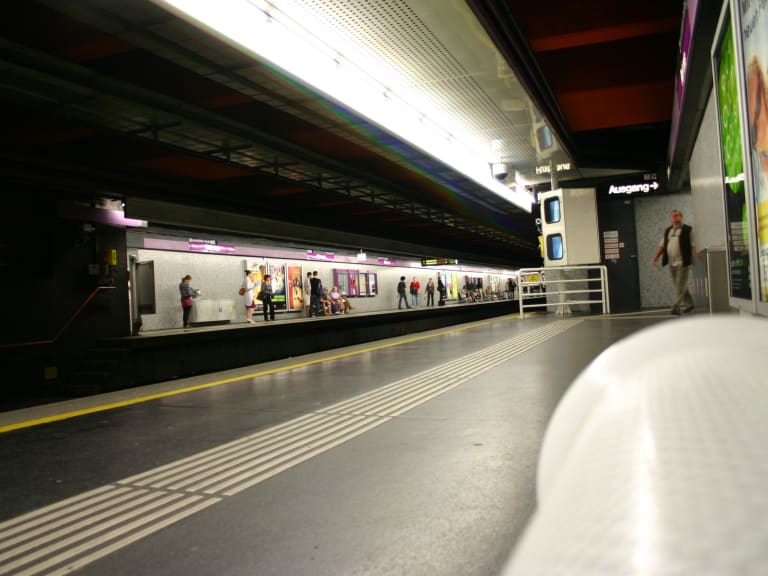
Getting to Belvedere Palace from the centre of Vienna is not difficult. For example, Stephansplatz (where St. Stephen's Cathedral is located) is only one kilometre away, so you can easily walk there.
For those less fond of walking (or if the weather is bad), the Austrian capital offers several means of transport that you can use to get to the palace easily:
- Metro - U-Bahn: near the Belvedere Palace you will find two stops that will suit you, Stadtpark and Karlsplatz. It is only about 500 metres from the entrance to the monument. Another option is to get to Hauptbahnhof station and enter the palace through the entrance to the upper gardens. Here is a map of the lines of this means of transport.
- Tram: possibly the best option for getting to the Belvedere Palace. Both lines D and 71 have stops near the entrances to the monument and can be taken in front of the Opera House or near Maria-Theresien-Platz and the Town Hall.
- Sightseeing buses: some of Vienna's sightseeing buses have a stop right on Prinz Eugen-Straße, a perfect place to enter the palace.

